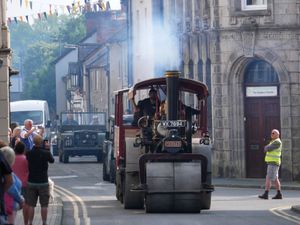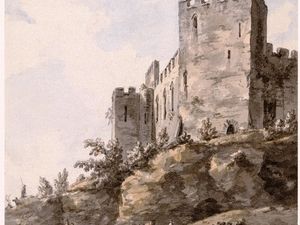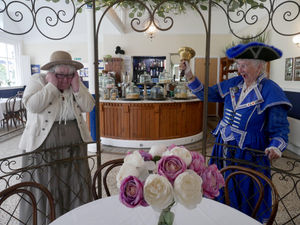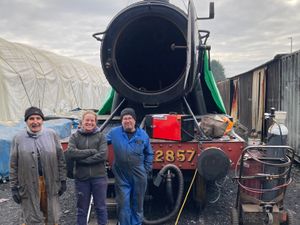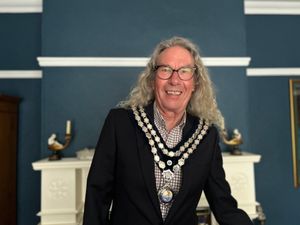Shropshire lad scored England's first international goal 150 years ago
Wednesday, March 8, is the 150th anniversary of the first ever goal in international football, writes Steve Gordos.
It was scored by a Shropshire man, William Kenyon-Slaney, an Old Etonian and a soldier of distinction.
Kenyon-Slaney, then with the Household Brigade, opened the scoring when England beat Scotland 4-2 at the Oval cricket ground in 1873.
It was the second international goal in football history, the first, between the same countries, in November the previous year, having also been played at a cricket venue, the West of Scotland ground in Glasgow. It ended goalless.
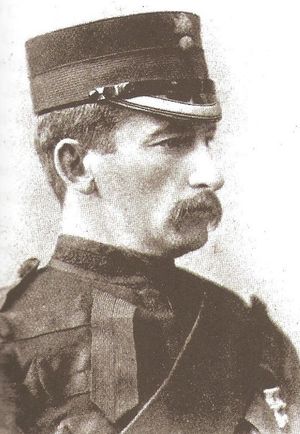
Things were very different in those days, the game coming only ten years after the Football Association had been formed and well before the arrival of professional football. It was the preserve of the amateur player, mostly ex-public school, university or military.
The occupier of a special place in football history, Kenyon-Slaney was born in Rajkot, India, his father being a captain in the 2nd Bombay Cavalry. The family returned to Shropshire to live at Hatton Grange near Shifnal when William was in his early teens. After attending Eton College, Kenyon-Slaney went to Oxford University but was only filling in time awaiting an Army commission.
His prowess at football earned him selection for his country at the age of 25 and he took little time in writing bis name into the game’s history, as The Scotsman newspaper reported:
“At first it seemed as if the Englishmen were going to have a hollow victory; indeed, although they were playing against the wind, they at once drove their opponents back, and, forcing their way onward, scored a goal in the first few minutes, through the aid of Captain Kenyon Slaney, to whom the ball had been cleverly middled by A G Bonsor.”
See also:
Scotland went two goals down through Alexander Bonsor of The Wanderers but fought back to make it 2-2 with goals from Henry Renny-Taillyour and William Gibb, only for Kenyon-Slaney to restore England’s lead before Charles Chenery made it 4-2.
The newspaper also reported: “It rained heavily two hours before kick-off. Despite the drawback the spectators trooped in in such numbers as to produce the largest attendance that has ever witnessed a football match, as upwards of £100 was taken in money, showing more than 2,000 persons, which, with more than 800 ticket-holders and members who have free admission to the ground, meant that about 3,000 visitors witnessed the match. The Scottish eleven arrived in London on Friday morning and took up their quarters at the Inns of Court Hotel in High Holborn.”
Kenyon-Slaney also played for the famous amateur side, The Wanderers, and a few weeks later helped them win the FA Cup, his club being required to play in just one game. Yes, just one game!
The explanation of this lies in the name of the trophy – the FA Challenge Cup. It was intended that whoever won the cup would then be challenged for it in the final the following year. So a knockout competition produced a challenger to The Wanderers, the holders as winners of the first ever final the previous year. It was Oxford University who duly faced them at Lillie Bridge in 1873 and were beaten 2-0.
As holders, The Wanderers had also the right to choose the venue for the final which is why it was not played at the Oval but at the Lillie Bridge ground in West Brompton, named after a local landowner Sir John Scott Lillie. The ground fell into disuse after a riot in 1888 when an athletics match was cancelled to the anger of 8,000 spectators, most of whom were there to bet on the races.
So Kenyon-Slaney picked up a cup-winner’s medal but no player would again do it so easily. The FA decided to drop the “challenge” idea and there would in future be no exemption for the holders. They also decided that the Oval would, for the time being, be the venue for the final.
Kenyon-Slaney did not play for England again but he did appear in two more FA Cup finals. He was in the Old Etonians team who drew 1-1 with the Royal Engineers in 1875 but was not available when the old boys lost the replay 2-0. The following year he played in both final games for Old Etonians who were beaten 3-0 by The Wanderers after a 1-1 draw.
He was also a useful cricketer and played for the MCC as well as Shropshire.
Kenyon-Slaney’s army career saw him serve in the Egyptian campaign of 1882 and he achieved the rank of colonel before retiring. In 1886 he was elected MP for Newport, Shropshire, and held office until his death in 1908. He is buried at Ruyton Church near Shifnal.
So, Shropshire, not exactly renowned for its football prowess can lay claim to two men whose place in the history of the game is permanent.
As well as the first scorer of an international goal the county can proudly boast the first man to play in one hundred internationals – Ironbridge-born Billy Wright. The Wolves legend reached the landmark when he skippered England to a 1-0 win over Scotland at Wembley in April 1959.
Two Shropshire men have a place in football history that will for ever be unique.

